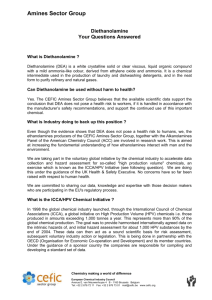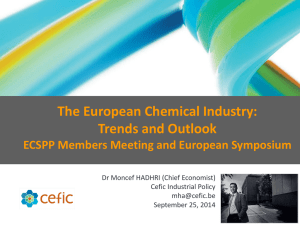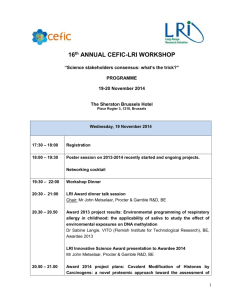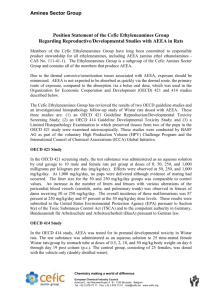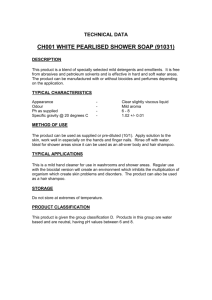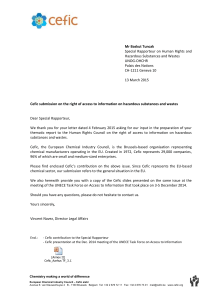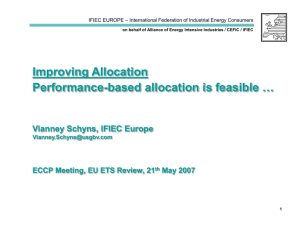Monoethanolamine - Petrochemistry Europe
advertisement
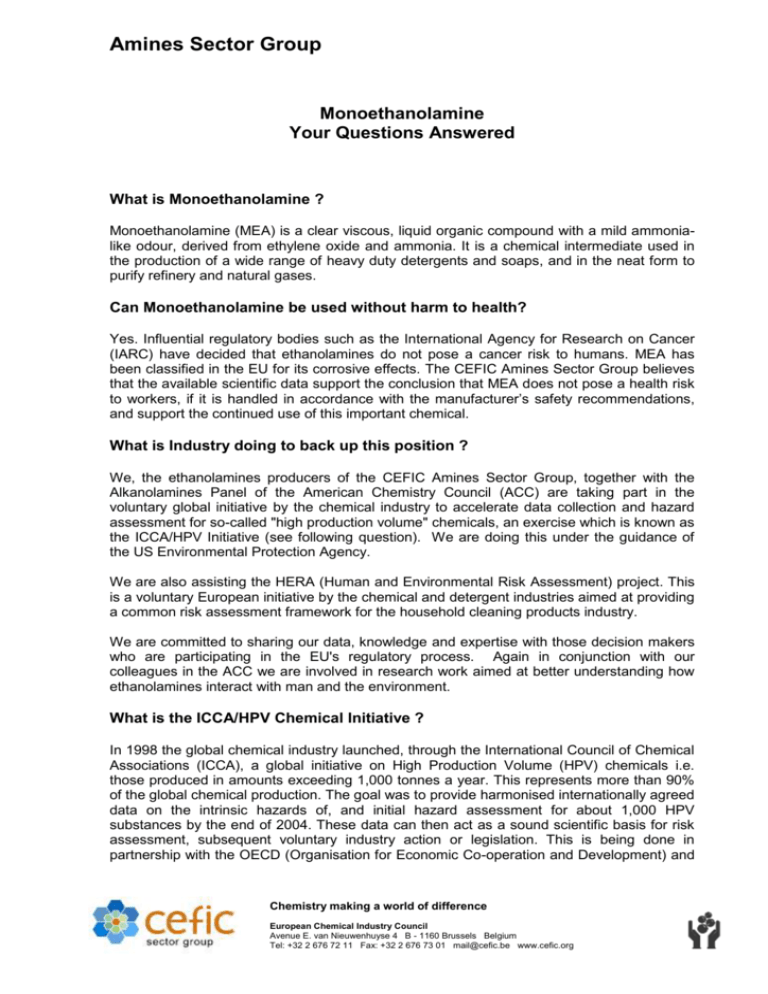
Amines Sector Group Monoethanolamine Your Questions Answered What is Monoethanolamine ? Monoethanolamine (MEA) is a clear viscous, liquid organic compound with a mild ammonialike odour, derived from ethylene oxide and ammonia. It is a chemical intermediate used in the production of a wide range of heavy duty detergents and soaps, and in the neat form to purify refinery and natural gases. Can Monoethanolamine be used without harm to health? Yes. Influential regulatory bodies such as the International Agency for Research on Cancer (IARC) have decided that ethanolamines do not pose a cancer risk to humans. MEA has been classified in the EU for its corrosive effects. The CEFIC Amines Sector Group believes that the available scientific data support the conclusion that MEA does not pose a health risk to workers, if it is handled in accordance with the manufacturer’s safety recommendations, and support the continued use of this important chemical. What is Industry doing to back up this position ? We, the ethanolamines producers of the CEFIC Amines Sector Group, together with the Alkanolamines Panel of the American Chemistry Council (ACC) are taking part in the voluntary global initiative by the chemical industry to accelerate data collection and hazard assessment for so-called "high production volume" chemicals, an exercise which is known as the ICCA/HPV Initiative (see following question). We are doing this under the guidance of the US Environmental Protection Agency. We are also assisting the HERA (Human and Environmental Risk Assessment) project. This is a voluntary European initiative by the chemical and detergent industries aimed at providing a common risk assessment framework for the household cleaning products industry. We are committed to sharing our data, knowledge and expertise with those decision makers who are participating in the EU's regulatory process. Again in conjunction with our colleagues in the ACC we are involved in research work aimed at better understanding how ethanolamines interact with man and the environment. What is the ICCA/HPV Chemical Initiative ? In 1998 the global chemical industry launched, through the International Council of Chemical Associations (ICCA), a global initiative on High Production Volume (HPV) chemicals i.e. those produced in amounts exceeding 1,000 tonnes a year. This represents more than 90% of the global chemical production. The goal was to provide harmonised internationally agreed data on the intrinsic hazards of, and initial hazard assessment for about 1,000 HPV substances by the end of 2004. These data can then act as a sound scientific basis for risk assessment, subsequent voluntary industry action or legislation. This is being done in partnership with the OECD (Organisation for Economic Co-operation and Development) and Chemistry making a world of difference European Chemical Industry Council Avenue E. van Nieuwenhuyse 4 B - 1160 Brussels Belgium Tel: +32 2 676 72 11 Fax: +32 2 676 73 01 mail@cefic.be www.cefic.org Amines Sector Group its member countries. Under the guidance of a sponsor country the companies are responsible for compiling and developing a standard set of data. What is HERA ? The HERA (Human and Environmental Risk Assessment) project is a European voluntary initiative launched in 1999 by AISE, representing the formulators and manufacturers of household cleaning products, and CEFIC, representing the suppliers and manufacturers of the raw materials. HERA will provide a common risk assessment framework for the household cleaning products industry, and show that this process will deliver evaluated safety information on the ingredients used in these products in an effective and transparent way. This process is intended to support a risk-based approach to chemicals legislation in the European Union, and may serve as a pilot for the application of the same process in other sectors and/or geographical areas. Is Monoethanolamine of concern in Europe ? No. In 2002 the European Commission Working Group on Classification and Labelling of Dangerous Substances the EU experts concluded that no classification is warranted for MEA with respect to carcinogenicity. Although MEA is classified for corrosive effects, these can be readily controlled and do not pose a risk in the use of MEA if the manufacturer’s safety recommendations are followed. What is the difference between hazard and risk ? The hazard associated with a chemical is its intrinsic ability to cause an adverse effect, whereas risk is the chance that a given hazardous effect will occur. Whilst a chemical may have hazardous properties, provided it is handled safely under contained conditions, any risk to human health or the environment is extremely low. The use of fire by humans is an example of balancing hazard and risk. Fire is extremely hazardous, but when used under carefully controlled conditions the risk of harm to humans or the environment is minimised. Want to know more ? For further information please contact Walter Cremers at CEFIC, Brussels (E-mail: wcr@cefic.be and telephone: +32 2 676 7224).
